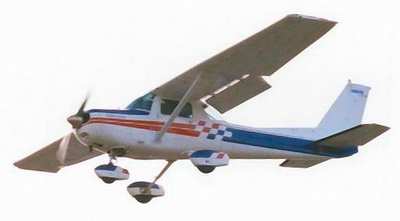Thu, Mar 17, 2016
Faulty Navigation Equipment And Limited Visual Reference Led To Fatal Cessna 150 Accident
In its investigation report (A14O0217), the Transportation Safety Board of Canada (TSB) determined that a faulty navigation receiver and difficulty holding aircraft heading while flying in conditions of limited visual reference, led the pilot of an aircraft to become lost, and eventually collide with terrain near Whitney, Ontario. Both occupants were fatally injured.

On 11 November 2014, at 1803 Eastern Standard Time, a Cessna 150M with two people on board departed from the Ottawa/Rockcliffe Airport under night visual flight rules for a flight to the Toronto Buttonville Municipal Airport. At 2025, the pilot transmitted a mayday indicating that he was lost and that the aircraft was low on fuel. The aircraft was below radar coverage, and air traffic control (ATC) attempted to assist the aircraft in locating a suitable aerodrome. At 2127, the pilot made a final radio transmission, and the aircraft crashed shortly thereafter.
The investigation determined that the aircraft was being operated in darkness, below a layer of clouds with limited visual reference, and over an area with few ground lights. The pilot was navigating by relying solely on aircraft heading and the information provided by an onboard navigation instrument (VHF omnidirectional range (VOR) receiver). A component within the receiver had deteriorated and was overheating, causing it to periodically display incorrect information. The pilot relayed this incorrect location information to ATC, rendering ATC assistance ineffective. Further, because the pilot was uncertain of the amount of fuel remaining in the aircraft, ATC attempted to route the aircraft to the perceived nearest airport with runway lighting rather than to one slightly more distant in a better lit, more populated area.
Shortly before the accident, the pilot entered a shallow descent, possibly in an effort to maintain visual flight in deteriorating weather, and as a result, the aircraft struck a heavily treed area.
(Source: TSB news release. Image from file. Not accident airplane)
More News
From 2023 (YouTube Version): Legacy of a Titan Robert (Bob) Anderson Hoover was a fighter pilot, test pilot, flight instructor, and air show superstar. More so, Bob Hoover was an i>[...]
Get The Latest in Aviation News NOW on Instagram Are you on Instagram yet? It's been around for a few years, quietly picking up traction mostly thanks to everybody's new obsession >[...]
Aero Linx: B-52H Stratofortress The B-52H Stratofortress is a long-range, heavy bomber that can perform a variety of missions. The bomber is capable of flying at high subsonic spee>[...]
Altimeter Setting The barometric pressure reading used to adjust a pressure altimeter for variations in existing atmospheric pressure or to the standard altimeter setting (29.92).>[...]
"Knowing that we play an active part in bettering people's lives is extremely rewarding. My team and I are very thankful for the opportunity to be here and to help in any way we ca>[...]
 Classic Aero-TV: Remembering Bob Hoover
Classic Aero-TV: Remembering Bob Hoover ANN FAQ: Follow Us On Instagram!
ANN FAQ: Follow Us On Instagram! ANN's Daily Aero-Linx (05.15.24)
ANN's Daily Aero-Linx (05.15.24) ANN's Daily Aero-Term (05.15.24):Altimeter Setting
ANN's Daily Aero-Term (05.15.24):Altimeter Setting Aero-News: Quote of the Day (05.16.24)
Aero-News: Quote of the Day (05.16.24)



